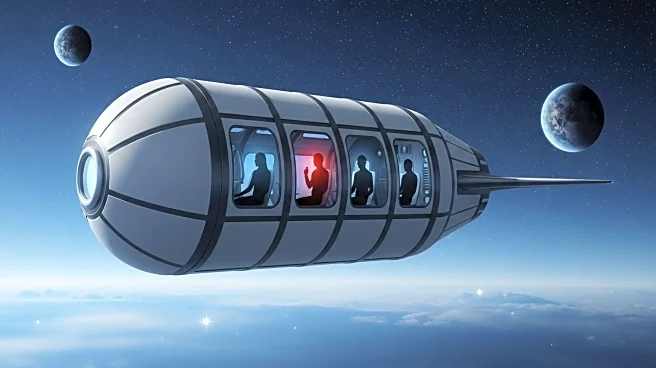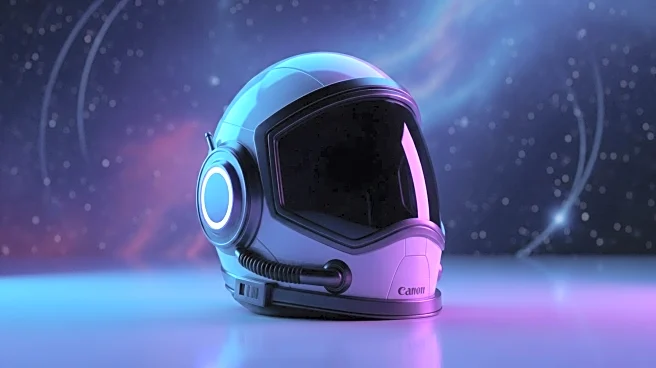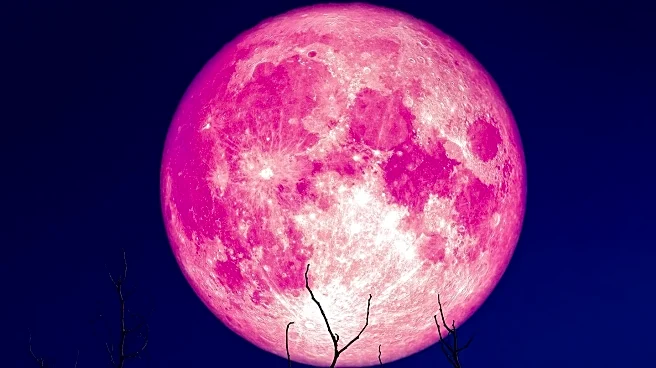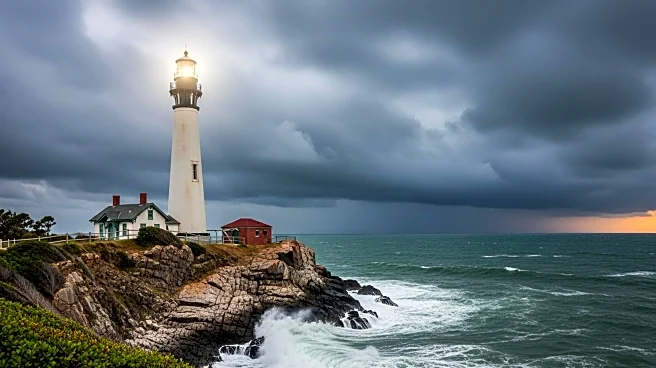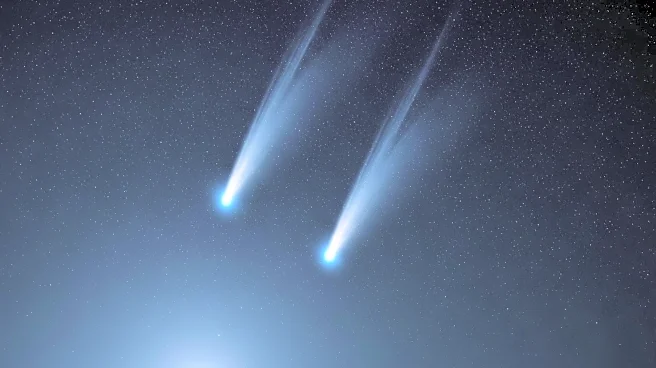What's Happening?
Lighthouse Reef, a whale-shaped atoll in the Caribbean Sea, is home to the Great Blue Hole, one of the deepest marine sinkholes on Earth. The sinkhole, with a near-circular opening spanning 1,043 feet and a maximum depth of 407 feet, was made famous by ocean explorer Jacques Cousteau in the 1970s. In 2018, a submarine expedition led by Fabien Cousteau and Richard Branson created the first 3D map of the Great Blue Hole, discovering a layer of hydrogen sulfide and the bodies of two missing scuba divers preserved by the anoxic conditions.
Why It's Important?
The exploration of the Great Blue Hole provides significant insights into marine geology and the effects of climate change, as the sinkhole was formed due to rising sea levels at the end of the last ice age. The findings, including the hydrogen sulfide layer, contribute to understanding marine ecosystems and the preservation of organic matter in anoxic environments. This exploration highlights the importance of marine conservation and the need for continued research into underwater geological formations.
What's Next?
Further exploration and research into the Great Blue Hole and similar marine sinkholes could provide more information on underwater ecosystems and geological history. Conservation efforts may be strengthened to protect these unique environments, potentially influencing policies on marine preservation and climate change mitigation.
Beyond the Headlines
The discovery of preserved bodies in the Great Blue Hole raises ethical considerations regarding the treatment of remains in underwater environments. The expedition's decision to leave the bodies undisturbed reflects respect for the deceased and highlights the challenges of balancing exploration with ethical responsibilities.

